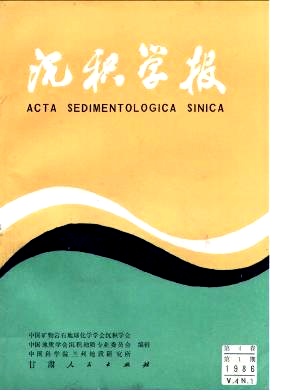FEATURES OF QUARTZ SAND SURFACE MICROSTRUCTURE AND THEIR ENVIRONMENTAL SIGNIFICANCE IN THE PRYDZ BAY, ANTARCTICA
- Received Date: 1984-04-16
- Publish Date: 1986-03-10
Abstract: Owing to specific geological environment the surface of quartz sand in Antarctica has a distinguishing microstructure, which has not been found in any low-latitude ocean areas and continental shelves. In this paper, by analyzing the microstructure of quartz sand surface of the Prydz Bay, we try to know the distinguishing characteristics of quartz sand surface, corresponding sedimentary environment, and the mechanical,physical and chemical factors. Our observation of several hundred electron micrographes of quartz sand indicates that on the surface of quartz sand, there are not only common collision pits and silica deposits, but also the forms which are peculiar in the Antarctic ocean area, such as widely-developed step fractures, big con-choidal fractures, glacial striae, etc. The distributions of these microstruc-t ure types are controlled strictly by the concrete and special environments. According to the regularity reflected by the mentioned-above surface mic-rostructure types, the rounded degree of the quartz sand, and features of detrital mineral associations and distributions, the collection area can be divided into two sedimentary environments, underwater area and beach area. The former can also be divided into the east sub-region and the west sub-region The factors affecting the quartz sand surface forms in the beach area are mainly the physical weathering and glacial compression action under the condition of severe cold and arid climate. So on the sand surface occur a large number of irregular fractures, conchoidal fractures and step fractures. The edges and corners of most grains are sharp, and the rounded grains are found unfrequently. The Prydz Bay is in an environment of deep sea basin. Great flow-ices occur on the ocean surface in winter, and most of them melt in summer. The sediments at the ocean bottom derive mainly from the weathered rocks of land, which are washed by ice-water, and the fragments carried by glacial. The area are affected by five water masses. They are the superficial water in the summer, the Antarctic water in the winter, the plutonic water round the Antarctica, the bottom water of Antarctica and ice shelf water. These water masses, circulations and waves provide dynamic factors for the carrying, striking and rubbing of sediments. As a result, the forms of quartz sand surface have not only the features found in the beach area, but also peculiar glacial striae in the high-latitude area. In addition, the V-shaped dissolution pits of directional arrangement can be found. Compared with the beach area, this area has more rounded grains. This paper also centres on the time sequence of the exogenic force actions which result in the overlapping of the imprints on quartz sand surface.
| Citation: | Chen Jianlin, Ma Kejian, Zhang Win. FEATURES OF QUARTZ SAND SURFACE MICROSTRUCTURE AND THEIR ENVIRONMENTAL SIGNIFICANCE IN THE PRYDZ BAY, ANTARCTICA[J]. Acta Sedimentologica Sinica, 1986, 4(1): 104-109. |






 DownLoad:
DownLoad: